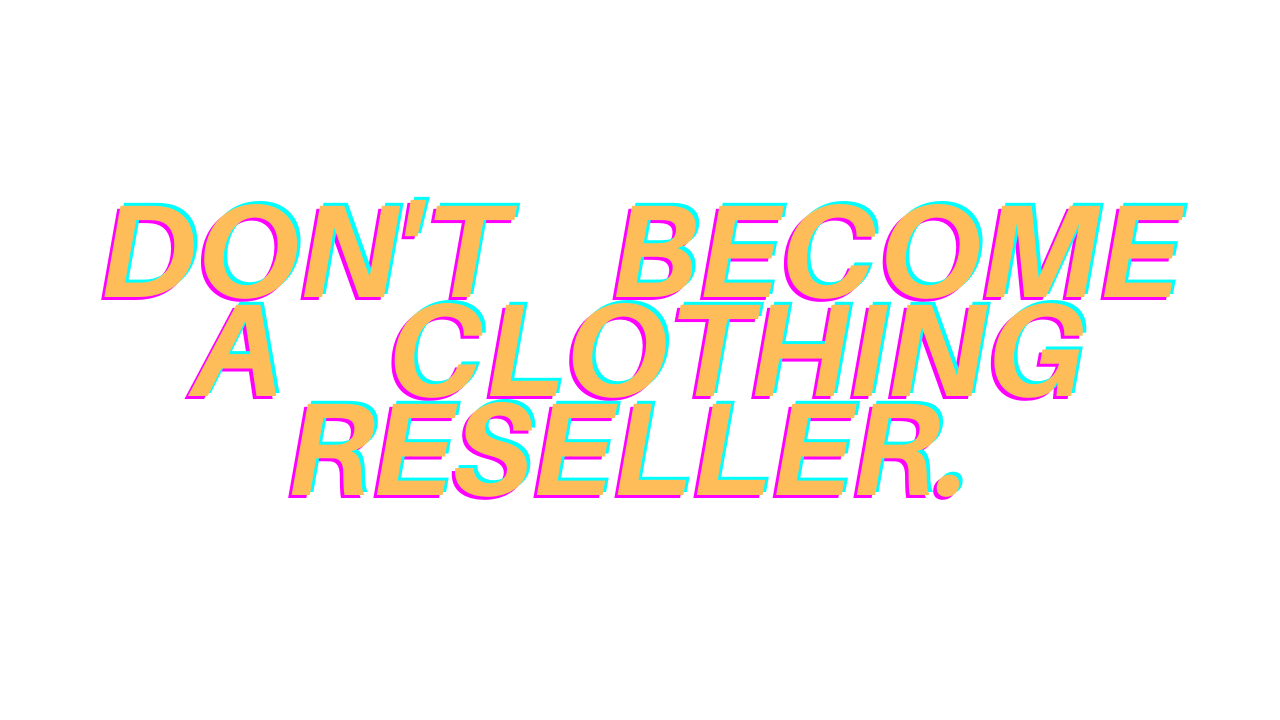5 Reasons NOT To Start Selling Used Clothing Online
Alright folks, here it goes. This isn’t anti-resale and I am well aware that there are people out there making hundreds of thousands of dollars selling used clothing on websites like eBay, mercari, etc.., but it isn’t for everyone and it certainly isn’t for me. I’ve sold what feels like everything over the years and I dipped my toes (several times) into the world of used/vintage clothing. I still will sell some items here and there, but I am MUCH more discerning when it comes to picking up clothing items than I used to be. Simply put, the strategy of buying every pair of jeans you see for $1 simply doesn’t work. It will probably be profitable, but the work and risks associated with it don’t warrant the investment of both time and money.
So here’s the five best reasons not to start selling used clothing online, at least the 5 best that I could come up with.
Inventory gets stale fast
If you’re selling used clothing, you are going to fall into two main markets: current trends and vintage. The issue with this is that current trends don’t stay current, and vintage is going to be equally as fickle with it comes to price points and what is currently popular. Certainly, good brands stay good and if you’ve got a $7500 coat from somewhere in Italy, that is worth reselling, but for the vast majority of items you’d find at at thrift store or even a garage sale, they are not reliably going to be worth enough money to warrant your time. The best used clothing resellers have an eye for detail and have no problem walking away from items that aren’t good enough to sell.
Returns are a pain
If you sell a video game and it works, they keep the video game. If you sell a book and the book isn’t ripped or filled with marker, they keep the book. If you sell a shirt and the person who buys it is fatter than they think they are, they return it, and you’re out $7 for the the cost of shipping both to and from the customer. You can say you don’t accept returns and some platforms like Poshmark take care to protect sellers from shithead buyers, but, for most people who are getting started selling clothes on eBay, you are going to be beholden to the buyer’s wishes and all they have to do is lie about an item having a stain etc… to get a free return. I hate dealing with liars and I hate returns. Some people are more patient than me, and they’re the ones who I will leave reselling clothing to.
Measurements are also a pain
I hope you like answering questions that you already answered in the listing description because that’s what happens. This is just my guess, but I think that people who sell cars have to deal with this a lot, too. You get idiot customers who don’t have the money to buy what they want, so they play pretend by wasting your time asking bullshit that they already know the answer to, because you responding to them helps perpetuate the delusion. Again, if you’re the kind of person who has kindness and patience, go for it! But if you get easily irritated by flaky, stupid people, you may want to look elsewhere.
There is a lot of competition
This isn’t aways bad, sometimes having a lot of competition means that the market is hot. But, before you start reselling clothing, do yourself a favor and research the market. We live in a society where you can get a new t-shirt from walmart for $5, so there goes the “bargain” aspect of used clothing (unless the brand is very special). We also live in an age of mass production and economies of scale, which is good at getting the price down for a supplier, but not so good at keeping the supply fixed in a way that is advantageous to high resale amounts. Often times, the fluctuations you see in used clothing on eBay are not because of a finite supply, but because of factors related to the buying habits of the customer. A good example is Tommy Bahama shirts. You used to be able to sell these for $40+ all day, and sometimes even more if it was a particularly sought after pattern. Notice I say “sought after” instead of “rare” because they really aren’t that rare, so much as they are appreciated by people who like them, and the people who sell clothing didn’t realize that so many people liked Tommy Bahama.
Once the market reacted and sellers began searching out more Tommy Bahama items, the resale value dropped to a rate that no longer made it worthwhile for full-time resellers to search them out (except in limited cases). If you want to see how saturated a brand/niche is, just go to ebay, search for the item you are curious about, then compare the number of completed listings vs the number of sold listings. If there are 500 sold listings and 2500 completed listings, that means each item only had a 1/5 chance of selling. This is a gross simplification, but you get the idea.
Buyers are picky
I have sold books that have tears on the cover. I have never, in my entire life, sold a t shirt that had a big hole in the front of it or a tear down the sleeve. Once you begin selling clothing that is worth sourcing out (for me, that’s items that sell for more than $50 profit), the buyer pool becomes wayyyyyyyy pickier and the kind of things that normally occur when an article of clothing gets worn (tears, stains, etc) turn into reasons that they want a discount, want a return, etc… Maybe you have an easy time finding a pin sized stain on the bottom inside tail of a shirt, or maybe, like me, you do not notice those things at all. The unfortunate reality is that, when you sell items with subjective value like clothes, you are then forced to deal with whatever arbitrary subjective value assessments the buyer has, whether they make sense or not. There are levels of truth for this with all things you might sell online, but, whereas all a shovel needs to do is not break when you stick in in the ground, a shirt does not just need the ability to be put on to be considered in good condition.




